Kingston Swing "Let's Talk" Blog
Many thanks to our stalwart team of bloggers for their steadfast blogging about all things Lindy Hop, Charleston, Jazz, Swing and the like. Come back here to check out their insightful and regularly updated ramblings... and join in the discussion over at our LetsTalk Facebook Page
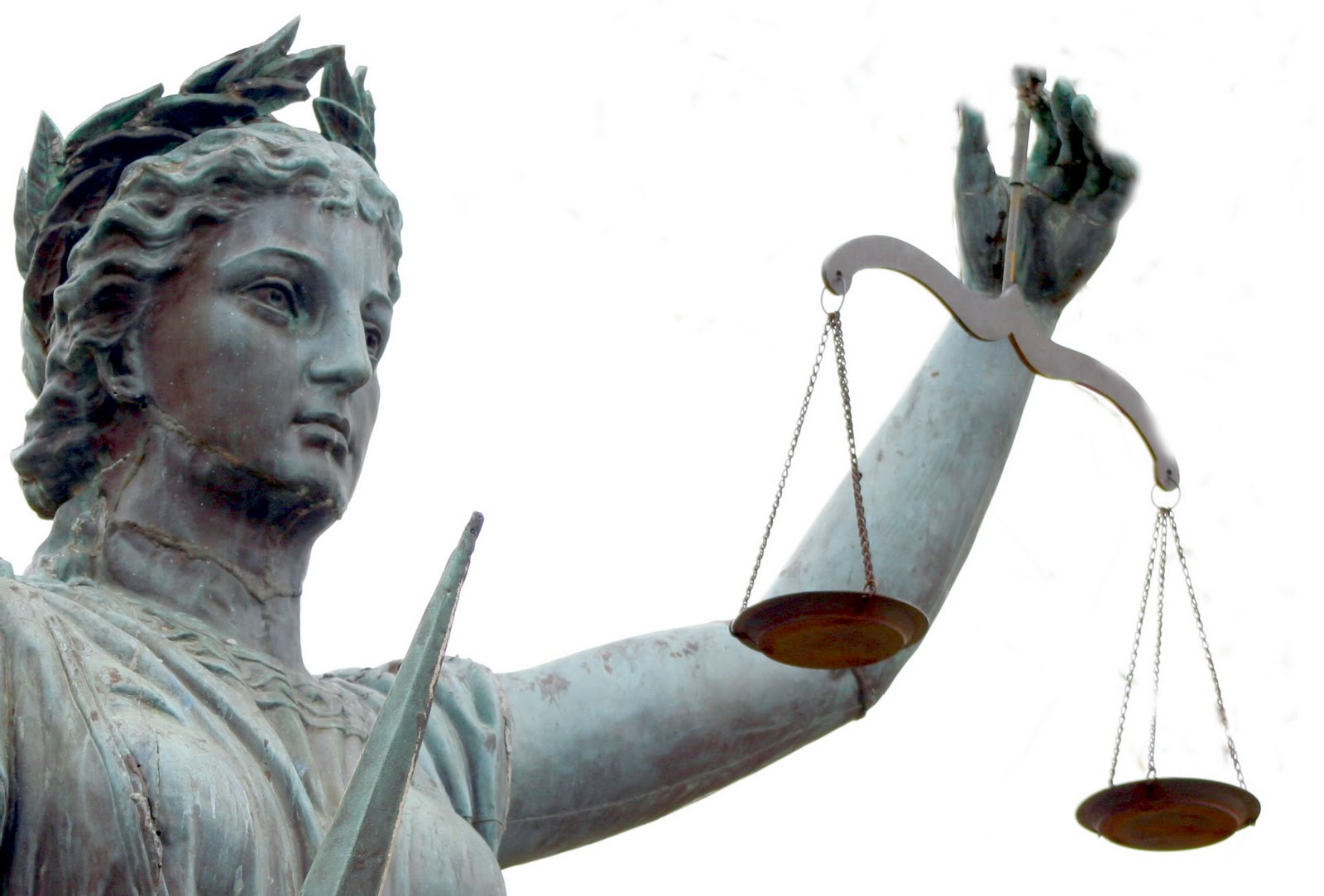
© © theinternet
However, having studied a lot of vintage clips of the ‘old school’ dancers from the Savoy era and beyond, it’s become noticeable that there is a distinct difference in the posture of both leaders and followers. I’ve extended this casual theorising to studying the habits of more experienced and professional dancers, and I’ve noticed a very similar trend in what I’ve seen; leaders are noticeable lower than the followers they are dancing with in terms of posture, angle and all-round bendiness. What’s this all about?
Firstly, I need to clarify a bit what I mean when I say low. We’re big advocates of the ‘shoulders back’ school of thought which minimises over extension, helps reign everything in, and generally tightens the frame. In doing so, this brings the chest out. So when we say ‘get low!’ we don’t mean hunch forward, we mean bend the knees and if anything, arch the back so the head is still up, the chest out, the bum out and the shoulders back. This may seem like an awkward and unnatural posture at first, but after a while it starts to feel a bit more natural, and the benefits to being able to lead and follow become apparent. It also LOOKS a lot more like the traditional, classic Lindy Hop of yore.
Having studied with teachers from all over the world for nigh on a decade, we’ve never once heard a teacher tell followers to stand up straighter. From the outset, the advice has been to adopt this posture. The moment these teachers begin to dance though, their posture shifts into a more graceful and elegant upright one with their weight well and truly on the balls of their feet, which gives them a greater balance and a greater ability to dance and follow more efficiently and skilfully. In essence, their backs (and spines) are a lot straighter. We toyed around with the effects of placing an arm around the followers back (in several positions, closed, during swingouts, midway through tuck turns etc), and found that the minute that followers backs are straightened the connection is increased dramatically. As a leader, it’s the difference between connecting with two to three inches of wrist and connecting with the entire forearm, so you can imagine how much lead/follow information is being lost simply through having an ‘ineffective’ posture. It’s quite hard to find this ‘perfect positioning’, but we’d recommend messing around until it becomes apparent. For us, the differences in what it enabled us to do were pretty startling.
We found that if leaders get a lot lower than their followers, it made lead and follow a lot clearer not only in closed, but even more markedly so in open, so we tried working out why. Our current theory is that we connect from a gentle hand hold, through relaxed arms, into the frame in our shoulders and across our chests, and we then try and initiate movement as leaders by moving our centres as opposed to yanking and tugging our follower’s arms. All our directional movement however is initiated from the hips. People don’t tend to naturally move in order to travel from the shoulders , feet, or anywhere else other than the hips and the ‘centre’, so that’s where we want our partners to be moving from in order to get a ‘natural’ movement. As we’re connected through the above-named systems, movement isn’t fully initiated from the centre unless the leaders get a lot lower than the followers; if they’re both on the same vertical plane, backward or forward motion in leaders will react in the upper areas of followers causing them to become unstable; to counter this instability, they’ll have to compensate by using extra muscles and energy simply to remain upright. People are balanced at their centre, so to push or pull them from ither above or below the centre will result in obvious toppling. Leaders getting low WHILST MAINTAINING THEIR FRAME AND POSTURE encourage followers to get moving from the hips. If we’re as low as followers as we’ve been told to get by some teachers, our centre shifts into our chests, causing a wobble and knock-on effect that destroys any attempt to look graceful, simply because the actual motion has to be self-initiated from the hips, not the chest which is where the lead is telling you to move from. And slightly more upright followers look a lot more graceful, responsive and skillful than the lower ones do. Because they are. Leaders need to get lower than their followers, as this counterbalances the discrepancy in the connection, effectively lowering the connection and enabling movement from the hips and not from the shoulders. If they’re on the same level to begin with, it’s basically going to unbalance followers.
Don’t believe me? Check out a few of your favourite Superstars of the Lindy spectrum next time you get the chance, and see just how low the leaders get compared to the followers. Better still, give it a go yourself. THEN make your mind up!

© some road sign off the A63
Firstly, it’s both polite and fair for all the people that come on their own. The majority of people that come to our classes come on their own; if we didn’t rotate, they wouldn’t have anyone to dance with. Simple as that. The people that are brave enough to come on their own will be as equally terrified on their first nights as the ones that don’t want to leave the side of the person they came with (and I was like that on my first few goes, so I can remember what it was like) so it’s an act of courtesy really to rotate out of respect for their bravery, coming along on their own.
Secondly, it helps to iron out any problems that you may find you’re struggling with if you dance with more people. Couples who don’t rotate don’t really get the benefit of trying moves with people with more experience in the rotation, so run the risk of getting stuck at the same level. They’re also (in our experience!) more likely to get infuriated with each other and burst into arguments, often storming out never to be seen again! If people DO rotate, by the time they get back round to their original partner they’ve sorted out all manner of quirks that they’d otherwise still be struggling with.
Thirdly, it’s generally a nice thing to be able to do, to dance confidently with everybody. We want everybody to be able to get to experience the joy of social dance and this is the best way to go about learning the skills that make it work and make it enjoyable, by dancing with as many different people as possible.
Lead and follow connection in Lindyhop is very much a language. It’s a direct form of two-way communication between partners in a dance, and the more clear that communication is, the better the dance becomes. Each person’s ability to ‘speak’ the language will determine what sort of dance comes about. When couples who only dance together and never rotate communicate in dance terms, they are communicating but it’s as though they are speaking their own private, personal language. We hear it quite a bit… ‘I can follow my husband perfectly well, but I can’t follow anybody else for toffee’, or ‘Im fine leading my girlfriend, but I can’t do a thing with other followers’. The reason for this can be as simple as that for such people, ‘bad’ habits have become a normal part of the language, much like how slang in-crowd jargon may be unintelligible to an unfamiliar third party in a polite dinner party conversation. Couples will also be so familiar with one another’s stock rotation of moves that they almost know what the other person is going to do before they even know themselves. This means that followers can get away with anticipating movement before a lead occurs. Which actually means that they’re not really following, and their leader isn’t really leading.
This isn’t to say that the language that they are speaking to each other isn’t any less valid in overall terms, or that their not really dancing; it just accounts for why they can’t apply their skillset to others and struggle to lead or follow in a social situation with a comparative stranger. Their own private language isn’t understandable to anyone else, and in order to social dance fluently with more people, they need to learn a new language, the one that everyone else is speaking.
And THAT’S the main reason why we rotate partners.
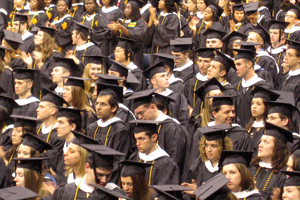
© hechingerreport.org
The simple truth is that there is very little in Lindyhop that is categorically right or wrong. The rules that we apply in our lessons are simply there in an attempt to make the whole thing a bit easier to learn and execute; we very often break some of our own rules in our Intermediate and Advanced classes (although you really need to learn the rules before you can break them with panache). The rules that we do have are essentially just that: our rules. And while most teachers around the globe appear to agree on a whole bunch of stuff regarding things like the basic principles of lead and follow (which is how our rulebook was honed), they all seem differ in some small respect from one another, be it in the relative merits of weight-change over stretch and release, or over simple things like personal styling.
Every Lindyhopper dances differently. At least, that’s the goal. Back in the day at the Savoy, if a dancer had their style compared to that of another, they’d usually go out of their way to change it to get back any unique character that they were lacking. The fact that everybody is built fundamentally differently helps in this to a degree; no two people can really do the same moves identically, as no two people are physically built identically. Likewise, every teacher teaches differently, as they will be teaching if not a different theory but a different style that is unique to them. We encourage everyone to develop a style of their own, which is one of the reasons we encourage people to get lessons from as many different teachers as they possibly can. They will invariably become better dancers as a result, and we’ve see this proved time and again in the results of people that attend weekenders and take lessons from a wide variety of teachers. In doing so, people can take the bits that they like the most from each teacher, and mould it into something unique to them.
Here at Kingston Swing, we’re committed to bringing as many teachers as we can to Hull, and not just because we’re compulsive teacher-collectors who never grew out of Pogs. We want people to experience as many different teachers and teaching styles as they can in an attempt to show them that there is more out there than we can actually provide, and that this isn’t a bad thing. We have come across scenes in the past who don’t like to share their members, going as far as to actively discourage them from learning elsewhere. This seems to be a bit self-defeating to us, as it’ll never really help their scene and its members to grow and develop. It may also be because we're a community group and not a business that we genuinely want people to be the best that they can, and because of this we're not precious and jealous when our members go elsewhere to gain further knowledge. To prove a point (that we put our money where our mouth is!) here’s a list, in no particular order whatsoever, of over 70 teachers that we’ve brought to Hull so far in the seven short years we’ve been running (not including our own stellar team of regular local Kingston Swing teachers, which would take the list well into the 90s)… if there are any missing from the list it really isn't personal, this is just cobbled together off the top of my head. If there’s any more that you’d like to see appearing on this list in the future, then please do get in touch, we’re always keen to hear people's suggestions for great teachers. And we do our best to give you people what you want!
Mikey and Gaby, Jim and Nicky, Chazz Young, Seema and Lee, Paul and Fae, Veidt and Anna, Sonia Ortega, Kate and Bobby, Alison and Tim, Ranj, Alba, Rob Shield and his missis Tina, Sue Freeman and Hannah, Jo Casey and Vix, Dom and Christina, Andy and Jeanette, Drew, Lou, Cat Foley, Cam Mitchell, Keith, Jo-lee and Andy, Velody, Joseph and Charlotte, Chris Barclay and Alison Marsh, Alf and Eli, Sinclair Ang, Jenny Duerell, Chris and Linda, Paul and Christi, Jenny Baynes, Jo Ashbridge, Joyce Monaghan, Kevin and Jo, Vince and Isabella, Steph 'Rusty North' Fairless, Trisha and Ben, Scott and Laura, Legs, Matt, Tessa, Gabriella, Simon Bressalini, James ‘Kibble’ Kibblewhite, David Perez and Eline, Sarah Gadd and Graham and Helen.
More to follow… and look out for some exciting new ones at Hullzapoppin’ 2015!!!

© drinkingdiaries.com
You'll hear a lot about the mystical beings known as 'Frame' and 'Connection' if you start Lindy. They are basically what allow us to improvise our dance to music with absolutely anyone, rather than learning set routines that can only be danced with a regular partner.
‘Connection’ is fairly self-explanatory- it’s where you physically touch your partner, and also the information you gain from partner at these points. Leaders communicate non-verbally both what they are doing and what they want followers to be doing at each moment of the dance. Unfortunately for the beginner, this information is almost invisible to the untrained-eye, and it takes time and practice to master. This is a whole other blog subject in its-self; for today I just want to concentrate on followers 'frame'
Frame(in my head, at least) equals ''connection to ones-self'' which allows the information from the leader to be used by the follower and at a high speed ; so when ,for example, as soon as your hand is led, your feet know where to go, how fast, with what rhythm, whether to turn or travel straight, and where to stop (usually at new point of lead/connection).
Frame is active! (despite following being seen as the 'passive' part of the partnership)
Frame allows leader to move you precisely, and for you to dance within the lead- i.e. to move with rhythm, style and enjoyment even though you are being 'told' the moves by the leader. So If followers had no frame at all (i.e. total relaxation through the body) leaders would be simply dragging a floppy mass around the floor. (See drunken clubbers or wedding revellers who do not normally partner dance having a go- note the painful-looking under-arm turns!)
So followers constantly respond to leaders, matching his/her tension and compression, travelling as fast/far/ and as straight or turning as she or he requires... all while trying not to anticipate the next move, and maybe chuck a bit of styling into the mix, plus being able to quickly 'switch on' in time for openings from the leader to shine and have a bit of fun! Damn it, we are GOOD!
Ok so all this takes practice, frustration confusion and going through various stages of learning to dance, and the odd lightbulb moment that makes you go 'oh yeah! I get it!' and then have to totally re-learn big chunks of your technique (at least that's my experience...)! I think I can say I was fairly typical as a follower in these stages- they just took me ages to get through!
In the beginning there was no frame. Classes involved worrying about feet and moves!
Then hearing more about, beginning to understand and Trying to HAVE frame (especially in my arms) but overdoing it and being rock solid.( This probably took me through my first 4 years of lindy)
Next hearing about relaxed arms but engaged shoulders and experimenting with that- which also helped improve my posture. This made my frame much more responsive- something I knew by this point that I had to work on (and spent 18 months concentrating solely on, every time I hit the dance floor)!
Obviously it doesn't take everyone that long to get through these stages, and doubtless there are many more to come as I progress and the dance develops and my experience grows.
So don't lose heart, if I can get there so can anyone- it's just practice! And most people practice a LOT more than me and consequently gain these skills much quicker than I did with my (very slow) learning in Lindy!
You'll never be bored with lindy, there's always something to work on!
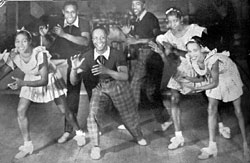
© swingornothing.com
I’m glad I stuck at it though. Since then I’ve taken the time to study the lankier professional Lindyhopper and their habits. What is it that makes them look just as good as their shorter counterparts? In order to look as good, they generally have to dance in a different way to a shorter legged dancer, and people refer to this generally as ‘dancing to their height’. So is there really anything in this theory that the vertically challenged (by which I mean in the traditional rather than Lindyhop sense) have one up on their bean-pole-esque brethren? Well, like so many things in Lindyhop, the answer may lie in the field of physics.
Consider if you will the pendulum. Any schoolchild will tell you that the only way in which you can alter the speed at which a pendulum naturally swings is by adjusting the length of the pendulum. A shorter pendulum will swing at a faster pace. Lengthen the pendulum and it will swing at a slower pace. When we dance Lindyhop, and especially partnered Charleston, we want our legs to swing with a nice, natural movement and a nice, natural pace. Stiffening of the legs and using any muscles other than those required to remain standing up will obviously make the movement appear stiffened and unnatural, and we want to look as well as feel relaxed and natural. So if we apply this principle of pendulums to our natural leg swing, for each tempo of music there will be an optimum length of leg. Faster tempos of music (and most Lindyhop and Charleston music is pretty damn fast) are therefore going to be suited to a shorter leg; the minute the pendulum’s (or legs in this case) length is increased above the optimum length, then extra muscles have to be deployed in order to maintain the tempo which then becomes an ‘unnatural’ swing. Slower music, it follows, is going to benefit from a longer leg.
Bear in mind also the fact that the longer a person’s legs are, the greater their natural pace. In other words, each step they take is going to cover more distance than that of a shorter leg. Twice the length of leg means twice the distance covered, and in a dance like partnered Charleston, there is quite a lot of travel involved meaning that the longer legged dancer is potentially travelling twice the distance as their partner who may be struggling to keep up. Ergo it follows that the lengthy-limbed dancer would do well to keep their body movement in check; smaller steps in general can iron out discrepancies and help to compensate for the difference in lengths, and this seems to be something that the hotshot lankies of Youtube fame seem to effortlessly carry off without having to lean down to their partner. As mentioned before, any leaning will affect the core body movement in a detrimental fashion so just keeping a straight back and lowering ones hands to allow ones partners core movement to not be compromised can make all the difference.
So there may be something in this received information stuff after all. All this hyperbole I’ve just postulated is thus far extremely unscientific though, in that it hasn’t been rigorously tested in the field. Watch this space though… if you’re at a social dance and you see me coming at you with a plumb line, a protractor and a tape measure, don’t be fazed; you now know what I’m up to. In the meantime, check out this clip of the man himself and his magnificently short legs doing their thing… https://www.youtube.com/watch?v=7Sdk3mqVSRA. Fantastic.

© hechingerreport.org
Feedback is great. We love feedback, it helps us hone and improve what we do as both dancers and dance teachers. I’d go as far as to say it’s pretty essential if you don’t want to develop in a bubble and stagnate. But feedback does have its time and its place. Not all dancers WANT feedback, for various reasons; sometimes it’s enough for someone to be working on one specific thing at a time, they don’t want to hear about anything else that they may also need to work on. At other times, it may sound less like constructive criticism and more like unwanted abuse. You may have been fortunate enough to have avoided dancing with the compulsive feedbacker: self-appointed-teacher types who compulsively offer their advice and opinions at the most inopportune times, such as during a social dance when all you really want to do is have fun, not seriously work on anything. Or maybe you haven’t been so fortunate…
As a leader, I try and accept responsibility for my leading. If my follower misses a lead, 99% of the time it’ll be my fault, either through shoddy, unclear leading or from trying to lead something that requires a following technique that my partner hasn’t learned or mastered yet. I try to avoid both of these things obviously, but I also try to avoid offering feedback, especially during a dance, unless someone specifically asks for it (and we make it pretty clear in our lessons that we are there to give feedback to people if they do want it!). From experience, there’s nothing worse than having someone telling you what you should be doing when you’re struggling to master it yourself. Especially when they may not necessarily know what they’re talking about.
Something that winds us up even more as teachers is people teaching in the lesson rotation. Here, the compulsive feedbacker is in their element; a constant stream of new victims by the minute for them to offer their invaluable coaching skills to. Or at. As teachers, we like to at least think that we sort of know what we’re doing. We generally have some sort of plan that we try to execute so that people learn a specific thing in a specific fashion and in a specific order. Other people teaching people in the rotation seriously disrupts our ability to do this. When people should be paying attention to the teachers in the middle of the class they’re having to listen to the compulsive feedbacker instead, and all too often they miss vital information about what’s coming next, or how to execute a particular technique point that will make a move work, because their attention is being diverted to something that may possibly be erroneous and damaging information anyway. They are only trying to help, but it really isn’t helpful. Ooooh, it makes us mad!
So what can the hapless victim of the compulsive feedbacker do to defend themselves against such onslaughts? By far the best approach is to politely apologise and explain that you can’t hear the teacher. ‘Sorry, I can’t hear what the teacher is saying’ usually does the trick, and makes them aware of the situation instantly. If you think they actually have something valuable to offer, you could always ask them to go through it with you after the lesson. But the important thing is that they’re not disrupting the class for you. If you think you may be that compulsive feedbacker, then maybe you should be considering a career in dance teaching, in which case come and have a word with us… not with your partner during a lesson!

©
One situation that we see a lot of is individuals getting frustrated with themselves within the lesson rotation. If a move or a footwork pattern is particularly challenging to them, it’s hard not to let this frustration manifest itself in vocal form; as a break from apologising, people can often be heard muttering scolding words of chastisement to themselves under their breath. We’ve probably all done it at one time or another. The learning process is a challenging one in a dance like this, and it’s only natural to feel frustrated at your inability to be able to achieve everything instantly. But we are mostly sensitive souls at heart, and so we ought to be aware of the fragile nature of the feelings of those around us…
A few years ago at a dance class out of town, we witnessed someone swearing at their partner and storming out of a lesson after they had mistaken their self-admonishing chuntering to be criticism of their own dancing ability within the class. That’s a bit of an extreme example, but what caused it seems to happen quite a bit: people will grumble at themselves for minor slip-ups, and their over-sensitive partner will automatically assume that it’s them that is being told off. The reason behind this appears to be due largely not to the original partners non-specific chuntering, but more to the fact that our human nature (unless we’re endowed with an unnatural level of self-confidence) predisposes us to assume that we’re probably in the wrong, especially when we’re in an unfamiliar situation such as the learning environment you’d find yourself in at a dance class. And a challenging dance class at that.
When I was a less experienced driver, every time I heard a car horn in traffic I would automatically (and most of the time incorrectly thankfully) assume that it was me who had made some dreadful and dangerous impasse. As a more experienced driver, this instant self-blame has waned a bit, and likewise as a slightly more experienced dancer, I’ve become less quick to assume a grumbling partner means I’ve made a serious and unforgiveable error. Experience helps you to not only make fewer mistakes, but also to appreciate that even if somebody DOES have a go at you mid dance, they’re really not worth upsetting yourself about. Ninety nine times out of a hundred, they’ll be having a go at themselves. The remaining one percent of occasions are most often committed by a very small minority who have perhaps picked the wrong hobby and have perhaps missed the point that mistakes don’t matter in the grand scheme of things and that you can still enjoy a dance to its fullest even if it’s not technically perfect.
So do try to be aware of your grumblings. The person listening will all too eagerly assume responsibility for anything negative you can throw at them, and in some extreme cases even take offense. Feeling frustrated with yourself? Better to keep it zipped if you can…

© Prusakov/Shutterstock
This is what we might refer to as received information. We take it as true, because in the absence of any other convincingly conflicting information it seems to be the most likely series of events. Another piece of received information is the way the dance has evolved, and alongside that, the way that the music that we dance to has evolved. From scouring the Interweb and chatting to numerous sources, the most commonly held belief about the way music and dance have changed together is that the music goes through distinct seismic changes, and the dancing adjusts accordingly to catch up. Jazz music is invented, and Jazz dancing appears and evolves as a form of interactive enjoyment of the music. As Jazz music changes, through Swing to Be-Bop to Modern Jazz, so too does the dancing, readjusting itself to what the musicians are coming up with. Personally, I’m not so sure that the process is so clear cut.
Music and dance don’t exist independently in a vacuum. They feed one another and in this way help one another to develop and evolve. From having played in live bands for over a quarter of a century, I can say with some conviction that while the musician may feel that their artistic creativity is paramount and that they are creating something new and exciting, they are being influenced constantly by their audience. If their work is so unusual and ground breaking that it that it completely alienates their entire audience, then no one would ever get to hear it through actively avoiding it, the musician would play less and the music would never become popular and successful. Therefore they generally take the considerations of their audience into their minds when creating music. Dance-era dance music, while spanning a wide time period and encompassing different styles and tempos, has one thing central to it in that it is written for people to dance to. Obviously there was a great deal of other music specifically created to not dance to, but this isn’t what we’re dealing with here, it’s the dance music we’re talking about. And in creating dance music, musicians are not only creating a need, but also responding to a need and also responding to the way in which people are already dancing.
It’s quite obvious from looking at historical pre-Lindy clips that the dance that we know as Lindyhop was developing through different dance styles for quite some time before Lindy-proper came on the scene (this clip from 1897 showing a Bowery Waltz has a few posture and movement moments in it that are distinct fore-runners to Lindyhop, and a good five years before the earliest Jazz was said to have been created to boot… https://www.youtube.com/watch?v=IYkIBhNSVVs), and so it is equally possible that music evolved to take into consideration the style of dancing that was already beginning to develop, and not the other way around. You may have found yourself dancing to a live band, as I have, and suddenly found yourself, in a moment of abandoned freestyle, ‘jamming’ with one of the musicians. On one memorable occasion I had the honour of riffing to a drum solo where myself and the drummer appeared, to me at least, to be having a conversation; in this sense, I was (as far as I was concerned!) influencing what he was doing through my own dance. Having spoken to live musicians (as well as having been one myself) this would seem to be a fairly common occurrence, live acts really do feed off the crowd, and respond to how the crowd is relating to them.
And so it goes that my theory stands, despite possibly going against received wisdom: Jazz dancing has just as much effect on Jazz music and its trajectory and development as Jazz music does on Jazz dancing. There. I said it.
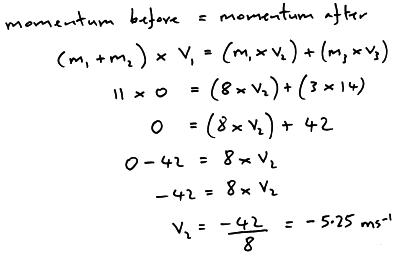
© Physicsnet
We don’t really need to know this in order to dance really well, but understanding it a bit at least may help. Our Golden Rule of Lindyhop #2 tells us that followers should follow their momentum in any direction that they are sent, until offered the next 'lead' telling them either to stop or to change direction or until the momentum runs out. The job of the leader is to offer strong yet gentle leads that above all are clear and obvious. In the cold vacuum of space, followers would keep moving for ever, but while we’re all still Lindyhopping on Earth, things like friction with the floor and to a lesser degree buffering against the air in the room will cause our momentum to fizzle out meaning that we come to a natural stop.
This can be a bit of hard thing to make your body do when you start dancing, as people tend to like to be in control over the movement of their bodies in their daily activities. Succumbing to the forces of momentum could be pretty dangerous in all manner of situations from walking down the street to reaching for a tin of beans in the supermarket, and we generally use our muscles to stop ourselves from moving all the time without realising we’re even doing it. We would crash into a lot more stuff a lot more often if we didn’t, and supermarkets would be messier places as a result. Because of this, coming to this natural stop can tend to get side lined in favour of ‘unnaturally’ stopping oneself.
Leaders will build up momentum for a reason. And the reason is that it can be used to great effect to establish strong connection. And when strong connection is established, momentum can be collected, channelled and redirected. And that’s when all the really cool moves start to work really well. In a Swingout, we establish connection, create momentum, catch the momentum and re-channel it in the opposite direction, and then slow the momentum by re-establishing the connection. It’s something that we keep referring back to all the time, creating ‘energy’ (or momentum), collecting it and channelling it in a nice elastic and bouncy fashion. It’s what makes it a nice, smooth, comfortable ride for both parties and not a violently jerky wrestling match. It’s also what makes it extremely difficult.
There are of course other ways of dancing. Choreographed routines don’t NEED connection and free momentum in the sense that each partner could just run around each other as they know what’s coming next; they could effectively both be in control of their own momentum. People who dance with the same partner all the time will often have their own private body language that will give away all manner of clues as to what’s about to happen and so they rely less on momentum (which is sort of cheating and the subject for another blog) but in regular social dancing, followers don’t generally know what’s about to happen and so for them to try and force the outcome of their own movement is to kill all this great connection that leaders are hopefully trying to establish.
As a leader, my following is pretty terrible. I know exactly why as well: as a leader, I’m used to thinking. So when I follow, I over think. I see what I think is a move coming up, and think about going in the direction that I think I’m meant to be going in. When I stop thinking and start feeling instead, it works a whole lot better, as trying to be helpful to your leader really doesn’t help them in the slightest. In doing so, you’re killing the momentum that they’ve gone to all the trouble to create, and created your own momentum which may be at odds with what they were trying to achieve. You’ve just killed all that great connection as well. It sounds extremely demeaning to tell a follower to stop thinking, but it really isn’t. Feeling can be equally, if not a lot more challenging, it just requires a different part of your brain. And once feeling becomes second nature, then you’ve got the time and space to start thinking about your styling. And then you start really dancing.
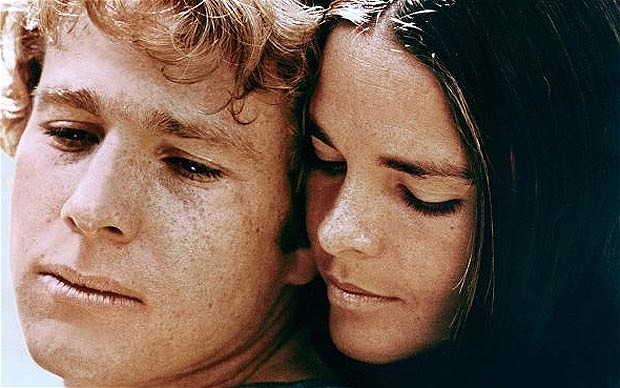
© Paramount Pictures
One of our bright spark teachers hit upon the idea a while back of getting everyone to apologise to one another at the beginning of the lesson. A massive mutual ‘Sorry!’ that got the whole messy business out of the way right from the outset, and anyone heard uttering even the faintest of apologies during the remainder of the class would be summarily shot. Or at least cast a suitably stern glance. Addressing the issue head on made everyone aware of just how much they do apologise; it’s an unconscious, automatic response a lot of the time. And it’s generally over something petty like a slip in the footwork that the other person in the equation isn’t even aware of. Other times it may be a misinterpretation of what’s going on, and people end up apologising for something that never even occurred. But most of the time, people apologise for one of the most amazing things in Lindyhop: the wonderful, marvellous Mistake.
Mistakes are good. Mistakes are akin to the random genetic mutations that cause evolutionary quantum leaps. Mistakes are what help the dance grow and evolve. Way back when dinosaurs Lindyhopped the earth and nobody took lessons, the whole procedure was very much about trial and error, and it was the error that largely made for new and exciting stuff. People would watch each other’s style and moves and attempt to recreate it in their own dancing, often misinterpreting what they’d seen and creating something completely new by mistake. Frankie tells a story of how he asked somebody he saw pulling a flashy move what the score was; “I saw you doing that last week and stole it off you!” he replied. Unable to mirror what he’d seen and missing the point, the hapless hero had created something new and unique unintentionally and by mistake. By glorious, wonderful mistake. And thus new material is born.
As we’re fast approaching a hundred years of Lindyhop, there isn’t a great deal that hasn’t been done before now moves wise, either by mistake or on purpose, but we’re still witnessing what look like fresh and innovative variations being created all the time by fearless experimentation. And of course the fearless experimenter won’t let a simple thing like making a mistake faze them in the faintest! They’ll plough ahead, owning and using their mistakes to their full advantage. So our advice to the fainthearted? Be like the fearless experimenter! Own your mistakes! Make them big! Make them proud! Make them work for YOU!!!
Another trade secret we’ll happily let you in on is if you do happen to make a glorious error in a social dance, do it three or four times in a row. Everyone will think you did it on purpose… within six months, Youtube will be awash with clips of people doing it all over the world. Trust me. I invented the Macarena by mistake in 1995 whilst attempting to dry my nail varnish…
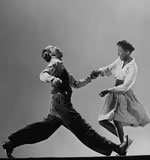
©
WRONG! Golf is rubbish. The correct answer is, of course, Lindyhop. And here are just seven reasons out of many more why I’m empirically correct and you’re wrong.
1.You can take it anywhere. Learn Lindyhop and you can travel to pretty much any city in the world and instantly have a ready-made scene of likeminded individuals at your fingertips. You could relocate your life to practically anywhere across the globe and instantly find yourself as part of a group that can at times be more like a family than your real family.
2. It’s great exercise without feeling in the slightest bit like hard exercise. Go to weekenders and you can find that you’re on your feet and dancing for up 18 hours a day. At a regular social dance you can easily find yourself dancing for up to six hours at a time with hardly a break, and without really noticing that you’re getting all that exercise. It’s hard to get down the gym and burn the same number of calories without feeling as though you’re torturing yourself. Lindyhop is so much fun in comparison that it’s practically effortless.
3. It’s a highly sociable activity, which is a pretty healthy thing given some of the other things you could be getting up to in your spare time. It appeals to people from all manner of people of all age ranges and ethnic and economic backgrounds. Through Lindyhop we’ve made friends all over the world with some of the best people you could hope to meet, and found that…
4. Lindy folk are the best folk in the world. While you may come across the occasional oddball, the oddball-to-non-oddball ratio is strikingly smaller than in most other areas of life. There’s something about the joy that Lindyhop brings that either attracts great people or simply brings out the best in people.
5. You never stop learning it. Lindyhop is the hobby that keeps giving; as it’s continually evolving, there’s always something new that you can learn, no matter how long you’ve been doing it. It’s a continual journey without an end, where the destination isn’t really all that important in the grand scheme of things as much as what you get out of it along the way.
6. We’ve got the best music out of all the dance forms. I’m not even going to bother backing this up with any evidence; it’s just a fact.
7. Golf is rubbish.
Possibly more to follow...
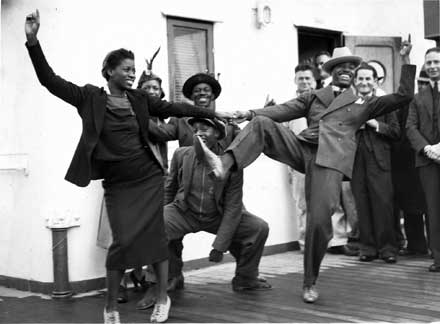
©
But there are another two ‘T’s that play a vital role, and it’s a role that not only applies to aerials but works equally well in most other areas of Lindyhop… Tits ‘n’ Teeth. Used as a classic backstage motivational sound bite for dancers, it’s a reminder to smile and stick your chest out, to look confident and happy… it also starts with a ‘T’ which is why we include it (helpful mnemonics and all that…). Projecting good confident body language is essential in aerials work. Partners can smell fear… if a terrified partner is hurtling toward you at terminal velocity with an expression on their face that suggests they’re not expecting to survive the journey, then that visibly tells you a lot about how you should be reacting to them. It’s hard to maintain a calm demeanour when you’re about to do a backflip over someone’s head for the first time, but avoiding expressions of terror can make all the difference to the end result. A calm and confident exterior can be useful for hiding any terror that may lurk within, but it also communicates a state of calm confidence to one’s partner, and they are more likely as a result to respond in a like fashion.
While the whole ‘Tits and Teeth’ is crucially important from a performance point of view (most competition standard performers are aware of this, and it’s one of the reasons they look so good compared with Joe Public) it can also play a big part in making your own regular social dancing look that little bit more amazing. People watching dancers will generally focus on whether they look like they’re having a good time or not. If for some reason you’re NOT having a good time, and it could be from a wide variety of different reasons other than the dance you’re having at that precise moment, ranging from a broken washing machine to worry about to what you maybe shouldn’t have had for dinner, have a go at masking the fact with a positive exterior. We teach dance with a view to getting people to get the maximum amount of fun and enjoyment out of it as possible. It’s the primary reason we do it: for fun. We don’t generally do it to win as one would in a competition, or to beat each other, but if you are having fun, then in our opinion you are winning. Embrace each dance with the sense of enjoyment that you want to get from it, and you will enjoy it. For me, every dance is potentially fun be it with a world class professional Lindyhopper or an absolute beginner. And I can honestly say that some of the best dances I’ve had have been with beginners, simply because this spirit of fun is more important in this dance than all the technical perfection in the world put together.
We’ve mentioned before that smiling is important in general dancing, but it’s also important to make it appear to be natural even if perhaps it isn’t, and make sure it doesn’t appear to be forced. A fixed manic grin positioned beneath two neurotically blinking eyes… it’s unlikely to help, and unlikely to convey this spirit of fun that we want to try and capture. When you’re confident enough to start relaxing your body (see previous blogs!) then have a go at relaxing your face as well. Once you’ve got over the initial terror of dancing with a complete stranger then you may find it impossible not to smile while you’re dancing. Most people do. But if yawning is mildly contagious, smiling is positively virulent. Smile at your partner next time you’re having a dance; I’d be very surprised if they don’t smile back. If you’re not careful, you both might start having fun without even trying.

© libcom
FUNDAMENTAL TECHNIQUE POINTS
Posture. Soft knees (pulse/bounce), weight on balls of feet, and feet under body at all times (ie never outside your core). Bum out, and sitting but never leaning back.
.
Movement. Move from core (ie more like jogging than walking) by shifting weight from core before stepping and committing weight onto feet. Maintain constant pulse and bounce, and move on EVERY beat of the music, not just within the seemingly important periods within moves. Small steps and minimal use of energy as a default. Movement to centre on working down into the ground, rather than up into the air.
.
Frame. Use of 'shoulder roll' technique (ie relaxed arms, shoulders up, back and down. Instill importance of leading and following from the shoulders, as opposed to wrists/arms/biceps etc. Never allow the shoulders to come forward of the rib cage, and maintain straight lines between forearms of both partners, to efficiently channel 'energy' (ie no V's or W's). Followers should attempt to keep hand in front of body, in order to not break frame, and follow hand where necessary and possible. Also, try not to let elbows come forwards/backwards of ribcage. Lemons under armpits!
.
Body Leading. By which we mean Leaders creating strong, positive leads from moving and dancing within their own bodies, and not attempting to force movement on their partners through using their arms (or other parts of their anatomy).
.
Strategic Rock Stepping. For moves such as Promenots, Double Lady-Spin tuck-turns, etc, it's beneficial for the Leader to take two steps back where the normal rock-step would occur, in order for the Follower to have significantly less distance to travel to get in front. This minimises awkward arm leading and having to 'force' directional movement. Similar examples of Strategic Rock Stepping involve circular directional rock steps for followers for American Spins, forward rock steps for leaders to provide additional rotation, turning full left for leaders for whip-ins, forward steps for followers in lindy turns, etc etc. Basically reinforcing the point from an early stage that rock steps do NOT necessarily have to go backwards/forwards.
.
Elasticity/Channeling Of Energy. In order to increase the gentleness/smoothness of the dance experience, newcomers should be familiarised straight away with the concept of elasticity, using analogies involving rubber bands, bungee cords etc etc. By using the principle of channeling energy created (as opposed to stopping leads dead midway through a move and having to create new directional energy) a much more 'comfortable ride' is maintained. Elasticity and the 'moment of boing' is fundamental to pretty much all of the moves that we do, and is underpinned by the concept of creating directional energy, then absorbing and channeling it. Sudden 'thuds'/stop-starts in the middle of moves are therefore to be avoided (unless intentionally required!!!).
.
Four Golden Rules Of Lindy...
1. Hand on the back. Followers should work gently into the hand on their back, and leaders have the obligation to offer something to work in to. In this way, it's possible to achieve counterbalance(by gently sitting away from each other) and a soft-lead technique for differentiating between six count, eight count and all other footworks is possible without having to physically force partners into movement, as both parties 'fall' backwards into rocksteps etc. This helps to minimise arm leading. Followers should try and clamp gently with their elbows on their leaders arm, ie no ‘fresh air’ between the two so that the leader may walk backwards without losing the connection. It is possible for leaders to bypass all this simply by tucking their partner in, but it’s good form especially for when you get to the ‘4’ of a Swingout…
2. Matching tension and compression. Actually the same rule as rule 1. (so there’s only really three Golden Rules… or three and a bit!) but applied in open, partners are in 'gentle opposition' in that directional connection should be equally matched between partners. A clear distinction must be made in this sense between a 'Connection' and a 'Lead', ie when the Leader wishes to move their Follower, they will move their bodies, and that by pulling gently on the hand for example, leaders are attempting to establish connection rather than directional movement (ie a Lead). The general default state for both partners should be one of relaxation, but ready to create and respond to tension/compression at a moment’s notice.
3. Followers should continue their momentum in any direction that they are sent, until offered the next 'lead' telling them either to stop or to change direction or until the momentum runs out. The leaders obligation within this situation is to offer clear and concise information, in a strong yet gentle fashion.
4. Look at your partner… don’t look down! A lot of the lead in Lindyhop is visual; by not looking at your leader, you’re missing a lot of potentially vital information. By not looking at your follower, you’re less likely to know exactly where they are! More importantly, by looking down at the floor, ones centre of gravity shifts away from the core and into the chin region, thereby making both leading and following a lot more problematic than it needs to be.
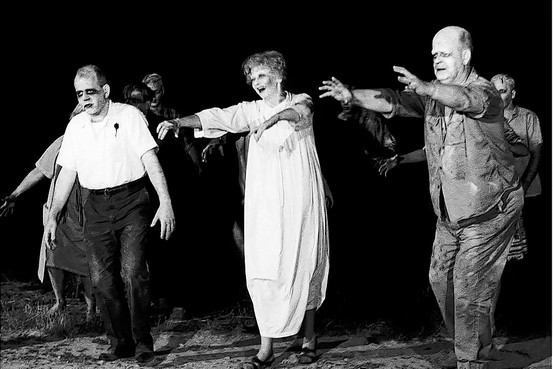
© Ten, inc.
Which is Myth #1 to be busted straight away. What happens if you relax completely? The first thing that would happen is that you’d collapse and fall into a heap on the floor. Which isn’t a particularly good way to start a dance. So obviously we need SOME tension in play; we’re continually harping on about good posture, bent knees, nice bounce… anyone new to this will know that there’s a whole bunch of leg muscles getting a severe workout that don’t normally get a look in in everyday activity, so there’s a whole bunch of tension there for a start. We’ve found that telling people to ‘just relax’ isn’t particularly helpful, as certain words will have different integral meanings to different people, so we really need to be more specific. In attempting to Body Lead, we are trying to communicate the movement of our own bodies into our partner’s bodies, usually via a connection through the arms, so when people tell you to relax, this is the area that they’re most probably referring to.
Spaghetti Arm Syndrome (or SAS) is a medically recognised condition that affects a high percentage of both new followers and leaders. Symptoms of SAS manifest themselves in the form of arms resembling two flailing tubular Tesco’s plastic carrier bags full of wet spaghetti that render effective leading and following highly problematic if not impossible. Okay, so maybe it isn’t a medically recognised condition, but it’s a very real threat to the fabric of our society that heralds the downfall of Western Civilsati… well, you get the point. SAS makes a simple thing like a Tuck Turn a lot harder than it needs to be if a follower is attempting to throttle themselves at the turn with a flailing muscle-less arm, or a leader is seemingly encouraging a follower to throttle themselves with their own arm through a weak and floppy lead. We don’t go in for all that throttling business here at Kingston Swing, no siree Bob. The main cause of SAS? Too much relaxation! Or more specifically, not enough tension where it counts. And where it counts is in your frame: a nice bit of tension across the back between the shoulders that allows you to relax the rest of your arms and lead and follow with aplomb.
However, finding where and when this tension is required is something that takes time. The most common progression after the SAS stage is the HypeR Tension phase (or HRT). In an attempt to find the required tension, dancers undergoing HRT will often have arms resembling something from a classic George A Romero film as in the above pic. This is a stage that most of us seem to go through; the trick to moving beyond it is to work out where the balance lies in between relaxation and tension. A small amount of tension exists just in maintaining good posture and frame. Aside from that, we should aim to be in a relaxed state arms-wise. When a leader offers a lead, there will either be a tension or compression involved, and the job of the follower is to match that tension or compression at the drop of a hat (see Golden Lindy Rule #2). For the HRT dancer, be they a leader or follower, that tension or compression is instantly there as their hyper tense state means their arms become planks that either tension or compression can be applied to, or likewise apply, instantly. The SAS dancer however is unable to match either tension or compression. Try getting a bag full of wet spaghetti to respond to you in ANY situation. You’ve got your work cut out.
A few years of unscientific research on the subject by our good selves at Kingston Swing has revealed that most experienced dancers would generally prefer to dance with HRT subjects than SAS subjects, simply because there’s more scope for effective lead and follow with the over-tense than there is with the over-relaxed. To tell people to ‘just relax’ can be unhelpfully misleading, although the intensions behind such a request may be good; super-duper dancers ARE extremely relaxed in many areas of their body, and being relaxed does help you to feel exactly where the lead is coming from and how and when you should respond to it, so yes, it IS to be encouraged. But there is no shame as far as we are concerned in going through the SAS and HRT stages, as we have had to go through them ourselves in a bid to understand this whole confusing mess we call connection and dancing. The next stage past these is obviously is to find the right balance between the two, the compromise between relaxed and tense. In Lindyhop, this manifests itself in the form of a bit of tension in the shoulder frame with relaxed-as-possible arms that are then able to either apply or respond to tension and compression at a moment’s notice. That’s the hard bit, and the bit that you can only really master through lots and lots of practice… so get practicing. Now.
Apologies to both the Special Air Service and the Hypertension Society. And to anyone undergoing HRT come to that.

© Rex Features
But lest we forget, we are British (well, most of us at Kingston Swing are anyway; it’s just a fact, I’m not trying to raise a point here) and as such we have certain, shall we say, restrictions about the way we relate to one another in normal social situations. And this means that staring at people and being stared at fall squarely into the area of freaking/being freaked out. Body language is a curious beast with a set of rules all of its own, and when we start up a dance with a relative stranger, we start to break these rules left right and centre.
The next time you’re out and about, take a moment to check out the body language of people you see having a chat. Eye contact is vitally important in good communication, but there is a line: staring intensely into people’s eyes is a habit generally reserved for the more intense conversations/arguments/rants. Intense dancing is good, but do we want to be arguing or ranting at one another? Are these the sort of things that we could be unconsciously conveying?
Good dancing is like having a good conversation. There is equal participation on both sides, and a great deal of sophisticated communication is in play. Years ago, I dipped my toes into the Salsa dancing scene; lingering, smouldering eye contact is encouraged as it helps to convey the passion that Salsa is all about. That really wasn’t what I signed up for. For me, it was massively off putting and made me feel like I was being more than a little bit creepy, so I found it hard to do and hence didn’t do it. And when dance partners did it back to me, it was a one-way conversation, which was even weirder. Lindyhop is a very different kettle of fish to Latin dances, and as such doesn’t rely on such overtly sexualised and smouldering body language. And it’s all the sexier for it in my opinion. But we still need to look at our partners. So look into your partner's eyes by all means as you would in normal, casual conversation, but if in doubt and you’re weirded out, look over their shoulder, look at their shoulders, look anywhere in the vicinity of their shoulders, don’t look anywhere near their shoulders if you’re weirded out by shoulders, but most importantly look at THEM. If they’re in the periphery of your vision, you’ll still get all that lovely information and be able to use it, more importantly you won’t be looking down. But probably the most important thing you can do on top of all that is to smile.
Smiling is something else that we British may not naturally excel at, but we wholeheartedly encourage you to give it a shot. Simply by smiling, you look as though you’re enjoying yourself. That visual lead we keep going on about? There’s a massive one right there. If you look like you’re relaxed and enjoying yourself, then that’s being communicated to your partner; it’s contagious, and it works like a positive feedback loop. Before you know it, you actually ARE enjoying yourself! Who’d have thought it? If you don't believe me, pull an unpleasant grimace like you’ve just stepped in something nasty, and just see what effect it has on your partner’s confidence and ability. It also instantly makes you look like an amazing dancer even if you’re borderline rubbish: just visibly and undeniably enjoying yourself can have the most remarkable benefits. People will WANT to dance with you for a start.
So there you have it. Look at your partner but don’t be ‘that creepy person’. Look at your partner and be ‘that smiley person who loves it and is really good fun to dance with’. Let me know how you get on.
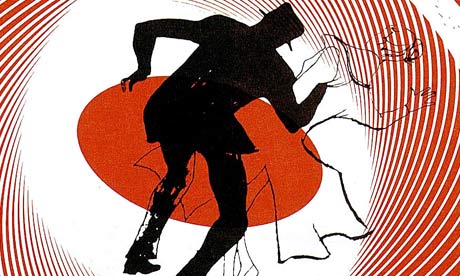
© Kobal
We preach the 'if you see a hand, grab it' rule as a sort of general time saving principle, but offering a hand that will then get grabbed is in itself a lead that will affect momentum, and so it goes that a visual lead thus transforms into a physical one. The way that your body moves from its centre will be affected by any connection coming via your arms if your frame is kicking in properly. New followers all too often miss so much relevant information by not looking at their leader and looking at their feet instead; new leaders are just as naughty for looking at their own feet and thereby wrecking the good connection they’ve established, and ruining their ability to lead clearly. This is completely normal, nearly EVERYBODY does it when they first come to Lindyhop as somehow your brain tells you that by staring at your feet they’re more likely to do what you want them to do. However, it’s extremely detrimental to the lead/follow dynamic, as just from the simple act of sticking your head out and looking downwards, your centre of gravity shifts from that lovely area just beneath your rib cage right into your chin, and it’s a whole lot harder to transmit information to one another through your arms (which is where your main physical connection comes from) from your wobbling chin than it is from your gracefully moving torso! Not only that, but as you’re now no longer looking at your partner, you’re missing all that hyper-useful visual lead. Resist the temptation to look down. Your feet will still be there underneath you whether you’re watching them or not! In short: Body Leads Good, Chin Leads Bad.
We often try to get people to feel this through the simple exercise of getting both leaders and followers to take turns in looking down at their feet when doing a few basic moves together, then back up again. The difference between the two postures is instantly noticeable. Another way we can experience the importance of this is to try and dance a few moves without making any physical contact (’Shadow’ dancing) and then try the same thing with partners taking it in turns to shut their eyes ('In the Dark' dancing). As well as proving the ‘visual lead’ point, Shadow dancing helps emphasise the importance of good clear body movement, and reinforces the fact that followers will always be a fraction of a second behind their leaders (which may be a bit frustrating for the super-musical follower as they’re always sliiiiightly behind the beat, but that is the burden that the super-follower must carry). Although it’s VERY hard to carry off moves that involve catching and re-channeling large amounts of momentum! As well as the obvious importance of the visual lead, dancing ‘in the dark’ helps to emphasise the importance of having good frame; if you have a healthy bit of tension in the back of your shoulders but relax elsewhere, don’t let your elbows come forward of your rib cage, and keep your hands at around the height of your hips, then they are there for your partner to find whether they can see them or not. However, once you open your eyes and put both of the skills together, the visual AND the physical, THAT’S when you begin to feel that your dancing may be going up a notch.
In the meantime though, DON’TLOOK DOWWWWWWN!!!!!
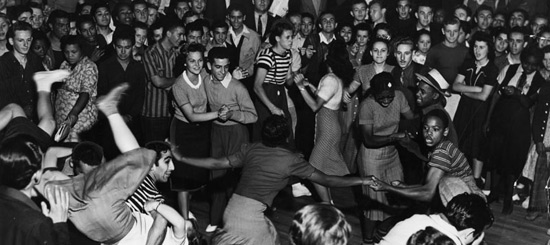
©
But what do we really mean by technique, and how does it relate to our dancing? Well, in our teaching, we generally divide ‘stuff’ (i.e. everything we do) into two basic categories: Moves, and Technique. Moves cover the basic shape, pattern and geography (where you’re physically travelling to and from) of the fancy stuff we pull in between doing hundreds and hundreds of basics. Technique covers the theory and practice of the stuff that actually makes the moves work: the underpinning nuts and bolts that make all the difference between dancing together or dancing on your own, or worse, just shoving your partner about in an unpleasant manner. There’s also a third category, ‘Style’, and maybe more about that later.
When we start dancing Lindyhop, we tend to find the technique both a bit baffling and a bit irrelevant. There is almost too much to think about from the outset, from struggling to get your feet to conquer new and strange footwork patterns, to maintaining some sort of connection with your partner, through worrying about having ‘frame’ and what direction either of you is meant to be going in, let alone maintaining any sense of lead and follow. To be honest, worrying about one aspect at a time is probably the best course of action, but we like to throw a lot of hard core technique at beginners as having that understanding of what we’re aiming for can be helpful even if it’s not instantly achievable, and, as we’ve said before here, it’s easier to develop good habits from the start than it is to get rid of bad habits further down the line.
Leaders and followers tend to have slightly different approaches to one another when it comes to moves and technique. The general trajectory for most leaders, once they’ve mastered the basic footwork, is to try and collect as many moves as they can to add to their repertoire. This tends to be not only in an attempt to keep their follower interested, but also to keep their own interest levels up. A follower dancing with a lead for the first time will be getting a brand new dance; for the leader, it’s possible that for them that it’s the same dance over and over and over again, as they may only have a small handful of moves that they’re comfortable about dancing in a set order. So to keep our interest up, us leaders NEED to add more moves in. Sorry, followers. As the general consensus from followers seems to be that they’re not that bothered about having dozens of flashy moves pulled on them, they’d generally much prefer a smaller quantity led well than a massive car crash of a dance where they can’t understand what’s going on! Which is where the technique comes in…
So collecting moves is a bit of a leader’s trait, and there are reasons for it other than sheer move-greed, and sometimes they can overlook that all important technique aspect. However, the technique in itself is nothing until applied to the moves, and the understanding of which technique applies to what move is paramount. As dancers progress into intermediate levels they have more and more moves by the week, but less chance of leading them properly. The more advanced a dancer becomes, the more they concentrate on the technique that holds it all together, and the less moves they seem to do as a result. Or at least feel they need to do! One important technique point we aspire to is to create a ‘flow’ where everything is seamlessly melded together by all the other technique we have accumulated. At some point along the line, we stop doing ‘moves’ as such and start dancing. That’s what we’re all after, surely.
So the bottom line is, technique on its own is meaningless. Moves on their own without technique are futile. One without the other is like… er, like a cliché without a… er… without a tired and overused phrase or opinion. For a slightly more in-depth look at our idea of technique, check out the ‘manifesto’ blog.

©
The exclamation mark is there for impact. The question mark is there as this is the question: is Lindyhop the perfect embodiment of the meeting of Art and Science? To prevent getting too bogged down in the realms of philosophy (we’ll maybe save that for another blog!) we’re going to be dealing with suitably vague definitions of both Art and Science for the next few paragraphs. For our purposes, we’re thinking about Art as a loose system of creative, free expression, and Science as a more rigid system of collecting and analysing information that helps us explain how and why certain things work.
Watching old archive footage of Lindy ‘back in the day’ (see The Spirit Moves etc), you don’t have to look TOO closely to see that the general style of dancing, while containing a lot of moves that are instantly recognisable and comparable to those you tend to see in modern footage, lacks a large dose of the smooth, comfortable and stretchy connection that has become the norm over the past twenty years or so. Savoy dancing was rough and ready; this was essentially a freestyle street dance after all, and people were inventing the dance form on the spot. What is readily evident is the undeniable, unbridled joy that comes with this self-expression; this must surely be artistic expression at its purest! What is more interesting is that nobody had lessons as such at this point in time. What they DID have was a historical culture of partner dancing for entertainment which we no longer have, in the absence of television/Xbox/etc, toddlers would dance with friends and family, so the concept of connection and lead and follow was learned at a very early age.
Nowadays, we have to attend classes to relearn the cultural information that we’ve lost during Lindyhop’s (and partner dancing in general’s) ‘dark age’ (the post war period up until arguably the 80s, when the first Lindy revival kicked off), but as classes are now the norm as opposed to the ‘throw yourself into it and have a go’ mentality of the Founding Fathers Of Lindy, with that has come a whole new set of rules that now appear to be making up an international unwritten rulebook of the fundamentals of Lindyhop. And it is this structure, albeit a pretty flimsy, oft argued upon one that gives the mechanics of Lindyhop some form of scientific credentials. It’s no coincidence therefore that Lindyhop attracts an otherwise disproportionate amount of scientific, self-professed technique geeks. Engineers, physicists, medical professionals: those with an analytical mind and from a scientific background seem to be drawn to Lindy and revel in the technical challenges that it presents, while at the same time getting the full benefit from the artistic enjoyment and potential for self-expression that it provides.
Over at Kingston Swing we’ve sort of written our own little rulebook. Mainly as a guideline for our teachers, it’s also extremely useful for referring back to in order to help answer any awkward questions that arise. It is a work in progress, and more about it will appear in another blog, but it concentrates mainly on themes such as
Posture (pulse/bounce),
Movement (moving from the core),
Frame, and
Body Leading.
We also focus on stuff like…
Strategic Rock Stepping,
Elasticity/Channeling Of Energy,
Matching Tension and Compression, and
Following Momentum.
cont...

©
My personal background is more in the arts (despite graduating with a BSc, which may be the possible cause for my fascination on the meeting of the two disciplines) and physics isn’t really my area of expertise, but I’m pretty confident that a lot of, if not all of these concepts that we rely on to make Lindyhop ‘work’ are rooted pretty firmly within the basic laws of Newtonian physics. The basic mechanics of what we do work a lot better when certain rules are applied; occasionally bad dances may have an artistic root but when things go wrong, there is more often than not a physical reason for why they go wrong that can be explained in terms of scientific principles. When we have established a decent connection with our partner, the way in which we move our bodies has an equal and opposite reaction on our partner’s bodies, and this is how the ‘magic’ happens. And yet the most amazing dancers that you see seem to break all the rules. To the newer dancer, the reasons for this can seem a bit frustrating and confusing. We’re telling them to do one thing, and yet they’re clearly witnessing ‘pros’ doing something utterly contradictory.
Well, the reason for this is a pretty simple one, and that’s that you really need to know and understand the rules really well if you want to break them with any degree of panache. This is what differentiates Les Dawson from junior school pianists, and Picasso from junior school painters; without a thorough competence in their art form, they wouldn’t be hailed as geniuses for their ground breaking, rule breaking work (and just to be clear, I’m not suggesting we should dance like Les Dawson played the piano, more like how Picasso played the piano perhaps…). Once we have mastered the basics (and the basics are actually pretty bloody complicated, so ‘basics’ might just not be quite the right word) then we can begin to express ourselves a lot more artistically in Lindyhop, as we then have both the time and agility to start to mess around with the form a lot more. Concepts such as musicality are a bit redundant if you’re still having to worry about which foot you’re on, after all.
Another confusing/frustrating factor is the changes in understanding that you have to go through as you become a better dancer. Very much like with learning sciences such as physics, what you are taught at GCSE is a basic version of how the physical universe operates. At ‘A’ level, you’re taught that it doesn’t really operate like that at all, it’s actually a bit different. At degree level, you find out that the first two things you learned weren’t quite accurate either, and the further you delve into the quantum level the more/less it all changes and all becomes ‘wrong’. We find ourselves going through similar distinct changes in our dancing as we progress upward through the levels of dance. Footwork is the major hurdle for the beginner dancer, followed by effective core body movement, followed perhaps by effortless use of ‘stretchy connection’. We usually find that in order to progress up to the next stage, we need to completely unlearn what we know, and rebuild it all again from the ground up. This is hard. It’s also very hard to tell someone that they’ve been doing it all wrong for what can amount to a considerable length of time, which is why we like to at least try and teach the principles of advanced connection technique from a very early level. We have found that this can confuse people horribly and make their brains melt slightly, but we’ve found that learning good habits from day one can be a lot better in the long run than having to try and unlearn bad habits further down the line. So as a means of apologising to anyone taking our technique class, sorry that it’s brain melting at times, but that’s why we do it!
It’s probably worth me picking myself up on the use of the word ‘wrong’ here before somebody else does, as we often say that there’s no right or wrong in Lindyhop, it’s a freestyle dance with no universal rulebook or governing body, and historically it’s still relatively new compared with, say, the Viennese waltz, where there definitely IS a right and a wrong way to set about it. It’s very much down to opinion with Lindy, which is where it may depart from the realms of science; do we really have the same sense of peer review as, say, biochemistry? Well, with the advent of Youtube, you may argue we possibly do. What’s important to us is that we have our own little set of rules that we set our store by, and THAT is what we use to determine what is right, and maybe what is not so right. We encourage our students to get out there and experience as many different teachers as possible, as each has their own unique style of not only teaching but dancing (we’re all very different simply by merit of our human nature), and students will learn a whole lot more and become better, more rounded dancers from learning from as many different sources as possible. But they may find in doing so that the basic principles that we speak about are the same wherever they go. This, after all, is how we honed our rulebook, by getting out there and learning from the best teachers that we could find. Like all good scientists though, we’re completely open to new, verifiable and testable information that may completely change the way we look at the way we dance and the system we have developed to learn to do so. If anyone out there has a theory of connection, movement etc that completely turns the way we understand it on its head, then bring it on by all means.
And as it stands though, we’ve yet to come across it!
At Kingston Swing we regularly talk about good posture and its many benefits but what’s it all about? An ideal way to achieve good Lindy posture and to grasp how it looks and feels is to jump and land. Where their knees naturally bend to is where they need to be. The posture is sporty and athletic rather than elegant and forced. It’s designed to facilitate the dance rather than beautify it. The moves in Lindy Hop are what makes it aesthetically pleasing, or rather, they are why people watch it. Compared with Ballroom which insists on elegant looking people dancing elegant moves, Lindy Hop deals with athletic positioned people jumping around.The athletic posture does, in Lindy Hop, what it does in athletics. It helps with centre of gravity and movement as well as being the best position to minimise injury.
Head
Try to look ahead, at your partner if in open. Not only is this polite but it will straighten your neck and back and bring them in to line with each other. Also try not to stick your chin out as this inhibits alignment too.
Shoulders
Shoulders need to be low and back but not tight. they need to maintain a frame and not dip with each step taken. This reduces the possibility of injury as well as aiding connection whilst leading or following. To ensure your centre of gravity is where it needs to be your shoulders will roughly be over your knees.
Arms
Arms need to be loose but alert to use of the frame. Unless the frame is being used the arms should remain relaxed with the frame being held in the shoulders. For both leaders and followers there is a need to hold a very small amount of tension in the biceps to help with the ‘Disney Princess Frame’ but the details of that will be in the ‘Frame’ section.
Hands
When holding hands with partners you should have a very small amount of tension, mainly in the fingers, to avoid painful gripping. Imagine trying to hold a crisp in your hands whilst trying not to break it. The fingers would stay tense to hold it in but not so tense that it crumbles.
Torso
The torso needs to stay straight and will be affected by the position of your shoulders and your head. This position will provide you with optimal lung capacity which helps breathing and stamina. To ensure this is the case you can fill your lungs with air. If the lungs are full your torso will be straight then you need only maintain the position as you breathe out.
Hips
Your hips should hopefully be around where your centre of gravity is. Your hips want to be back as you position yourself but they want to stay in alignment with your back and neck. Without this alignment you can put too much pressure on your lower back and you will automatically compensate for this thereby throwing out the rest of your alignment. You can try to imagine that your pelvis is a fruit bowl, it can be moved around without much happening but if it tilts and goes out of line everything falls out. If your hips are back (and your shoulders are above your knees) your torso, keeping straight, will move forward to a more familiar athletic stance. This will also help distribute your weight evenly down your legs.
Legs
Legs need to be bent to aid with centre of gravity as it moves forwards and backwards. Your weight needs to be distributed evenly between upper and lower legs to maximise efficiency with space for extra tension in the calves as the heels are lifted off the ground.
Knees
Your knees need to be springy as if compensating for downward momentum. As movement occurs the knees need to be unexaggerated and natural like a long distance jog rather than a sprint.
Ankles/Feet
Your ankles need to be springy like your knees as a lot of dancing will take place on the balls of your feet. This will cause heels to ache early on but is less likely to damage them in the long run as it will build the muscles in your feet. Feet also want to be shoulder width apart. Not only is this a comfortable position, it is a stable position as it balances your centre of gravity when moving side to side.
While there is a lot to be thinking about in your posture, a lot of this is taken care of when you jump and land, just remember to look forward, distribute your weight down your legs and somewhere along the way remember that you’re doing this for fun and enjoyment!

